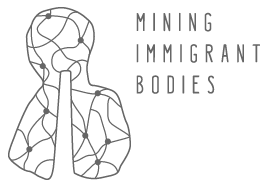Postwar immigrant men flocked to the Sudbury region to work in the area’s nickel mines after 1945 and settled, with their families, in Copper Cliff and Coniston as well as in the neighbourhoods of Gatchell and the Donovan, where there have always been higher levels of contaminants in the water, air, and soil because of their proximity to this industry. Taken together, immigrant men, women, and children who lived in these places are uniquely situated to share local knowledge about Sudbury’s environmental past as well as the long-term and often delayed impacts that heavy industry have had on their bodies.
If you were an immigrant miner during this period or the wife or child of an immigrant miner and you lived, worked, or played in these places, we would love to speak to you about your experiences. What has it been like to live under the shadow of INCO’s smokestack in Copper Cliff’s Little Italy? What do Coniston’s Ukrainian and Polish residents remember about living close to the smelter? Did German and Finnish residents of the Donovan, a neighbourhood located a short distance from INCO’s Frood Mine and downwind from the Copper Cliff smelter, think about the toxins in their environment? What are the challenges that Gatchell residents have faced when it comes to gardening, given that there is a high concentration of slag and hence industrial toxins in the soil? What role has mining, and its varied environmental impacts, had on your everyday life?
Your answers to these questions are important, and we want to hear them. Please fill in this online form so that we can connect with you.
Contact us
Image credits: Northway-Gestalt Corporation [photograph], ca. 1955, Ontario-Sudbury-International Nickel Mines, Sudbury, C 30-1: Container C-359-370, Archives of Ontario.
